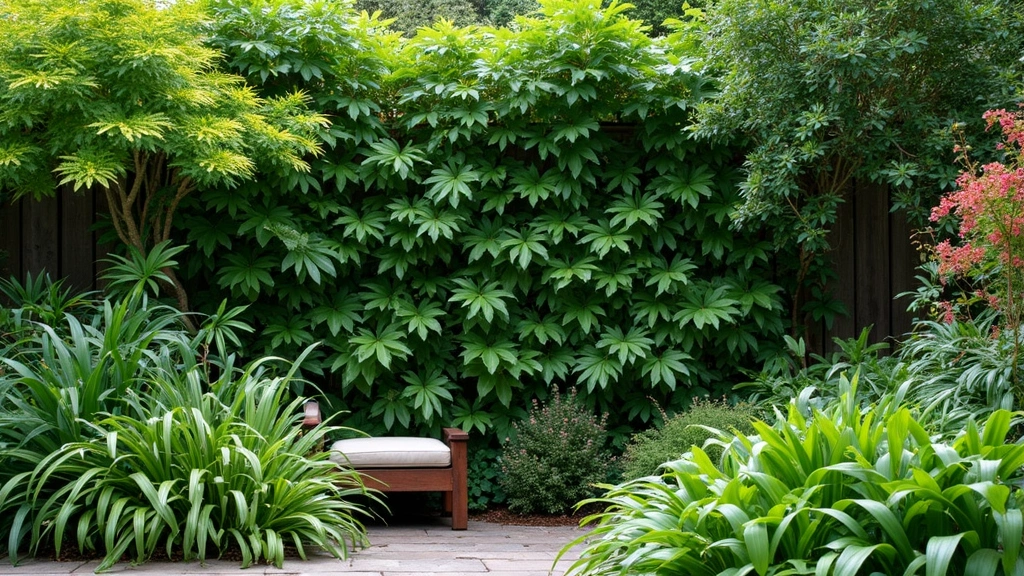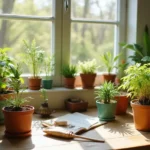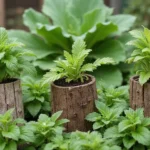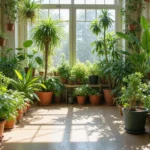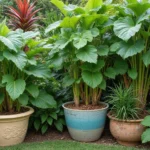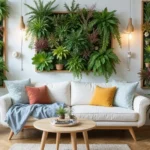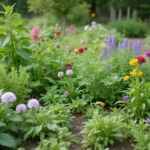Creating a serene and private outdoor space can transform your garden into a personal oasis. With the right plants, you can craft beautiful, functional barriers that offer both seclusion and style. From lush greenery to vibrant blooms, plant privacy screens add a natural touch while keeping prying eyes at bay.
Explore innovative vertical gardening options that enrich your landscape with texture and color, all while maintaining your desired level of privacy. Whether you’re looking to block noise, shield from wind, or simply enjoy a peaceful retreat, these 30 creative plant privacy screen ideas will inspire your next garden project.
1. Bamboo Bliss
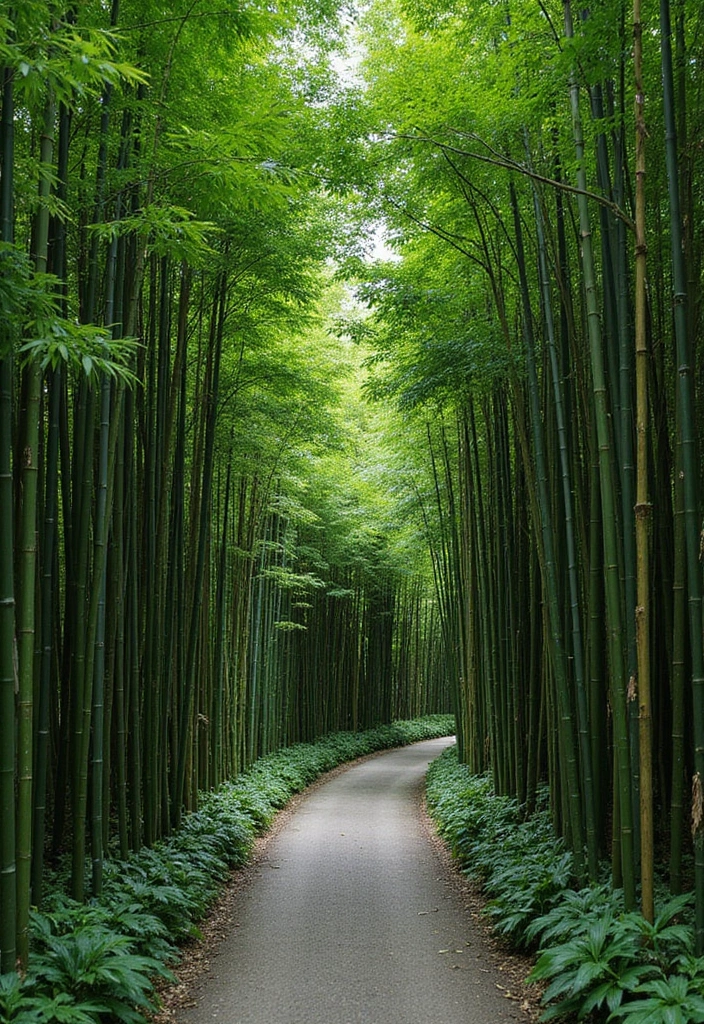
Bamboo is a stellar choice for a privacy screen due to its fast growth and dense foliage. With varieties like ‘Giant Timber’ or ‘Black Bamboo,’ you can create a stunning green wall that stands tall and offers ample coverage.
Benefits: Bamboo is resilient and can tolerate various conditions. It grows quickly, reaching its full height in just a couple of years.
Tips: Consider planting multiple species for a layered look. Incorporating gravel or mulch at the base can help with drainage and keep weeds at bay. If you’re in a windy area, plant bamboo in clusters to enhance its strength.
Insights: Remember to check local regulations as some bamboo species can be invasive. Opt for clumping varieties to ensure they stay contained.
2. Lush Hedgerows
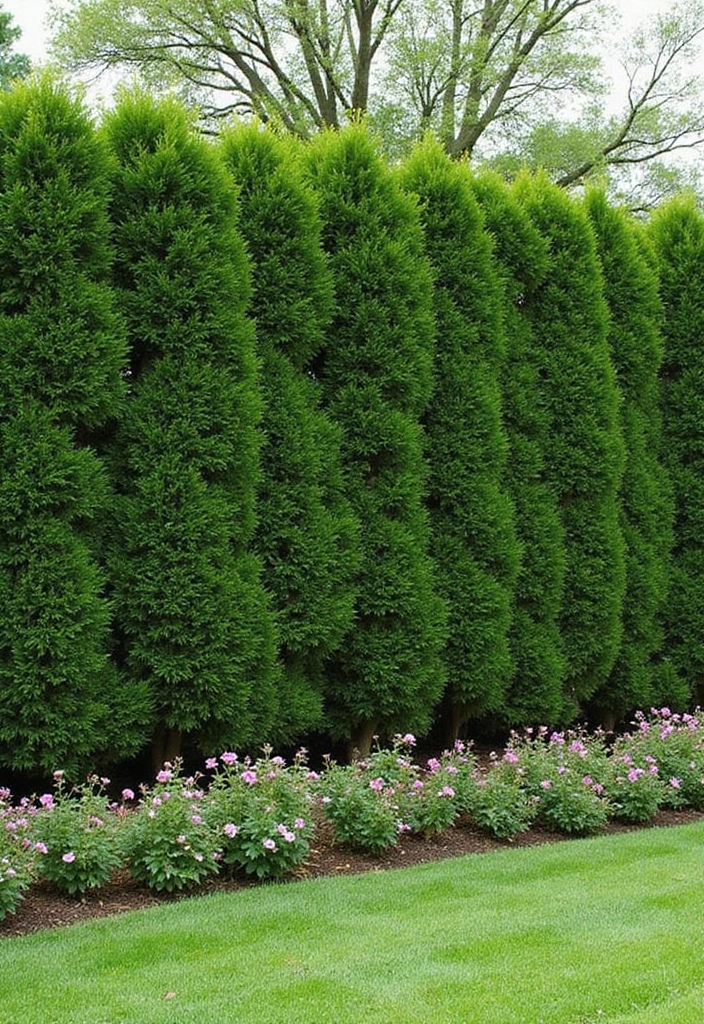
Hedging plants like boxwood or privet not only provide privacy but can also be shaped into beautiful topiaries. They create a formal yet lush barrier that enhances garden design.
Benefits: These plants are hardy, easy to maintain, and can be pruned to any desired shape, adding a custom touch to your landscape. They’re perfect for creating a sense of enclosure without feeling overwhelming.
Tips: Plant them at least 2 feet apart to allow for proper airflow and growth. Regular trimming keeps the hedge dense.
Insights: Mix in flowering plants for seasonal color and interest to break up the monotony of the green.
3. Flowering Vines on Trellises
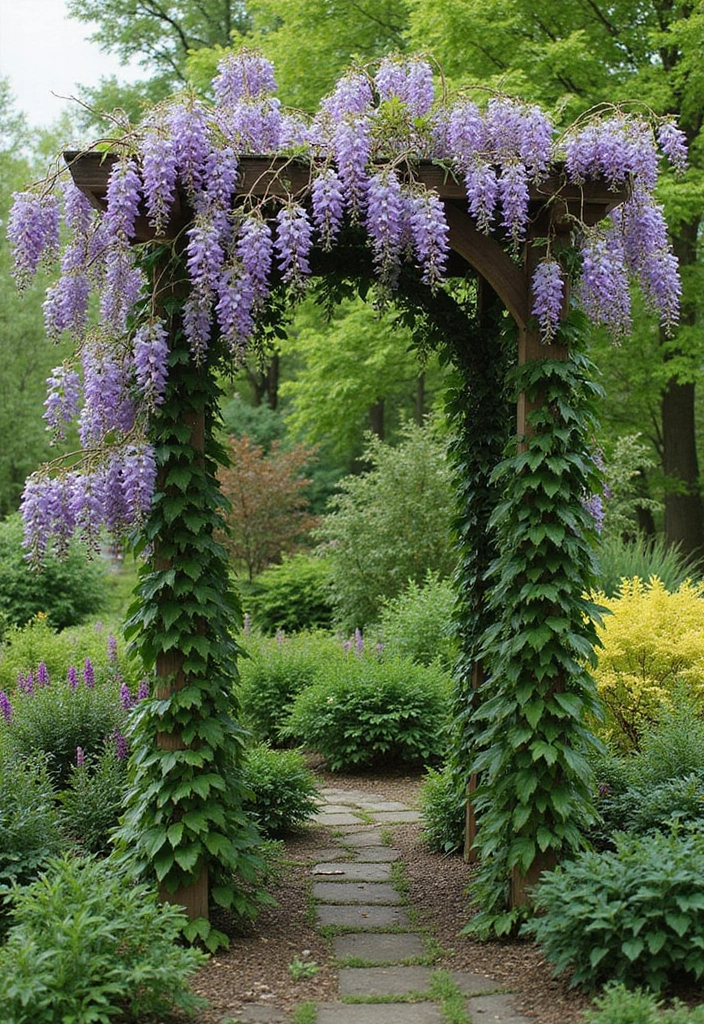
Climbing vines, such as wisteria or clematis, can create stunning vertical screens when grown on trellises. They not only add height to your garden but also bring fragrance and visual appeal.
Benefits: Vines are excellent for small spaces as they utilize vertical space effectively. The burst of flowers adds seasonal beauty.
Tips: Choose a sturdy trellis and ensure the base of the vine is well-supported. Regular pruning helps control growth and encourages flowering.
Insights: Combining multiple varieties can create a tapestry of colors and scents throughout the growing season.
4. Ornamental Grasses
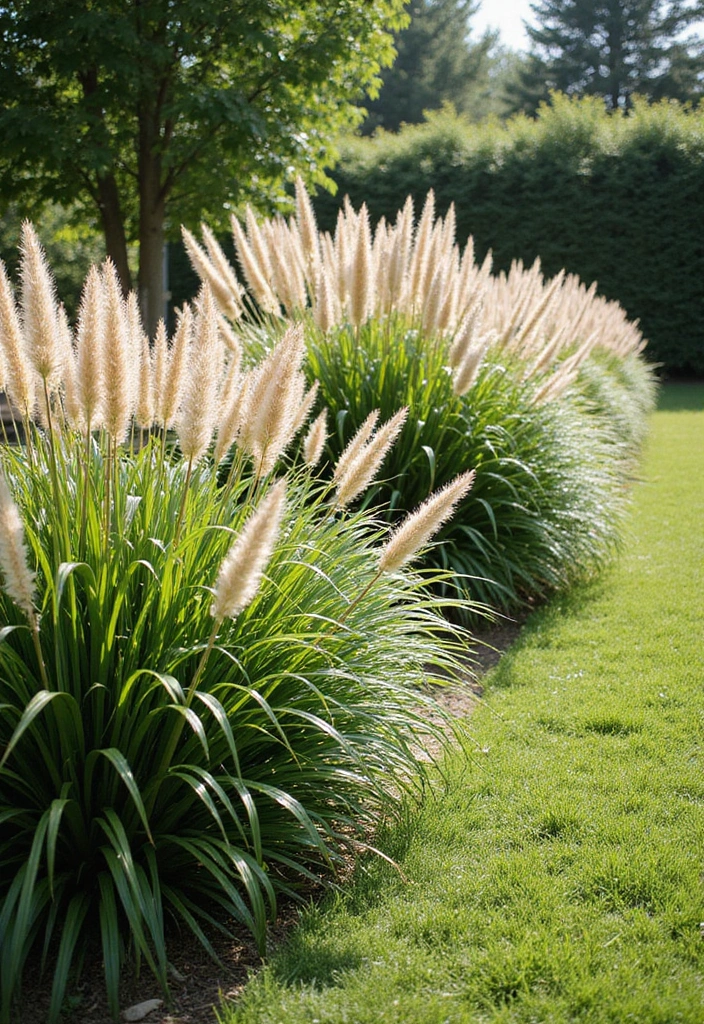
Ornamental grasses like Miscanthus and Pampas Grass create textured screens that dance beautifully in the wind. They offer privacy while adding movement and softness to your garden.
Benefits: These grasses are drought-tolerant and require minimal maintenance, making them ideal for busy gardeners. They thrive in a variety of soil types and conditions.
Tips: Plant in groups for a more impactful display, and consider the height of the grass in relation to your desired privacy level. Cut back in early spring for new growth.
Insights: Incorporating different varieties can add layers of texture and interest throughout the seasons.
Ornamental grasses like Miscanthus and Pampas Grass not only create a stunning plant privacy screen but also dance in the breeze, bringing life and softness to your garden sanctuary!
5. Vertical Herb Gardens
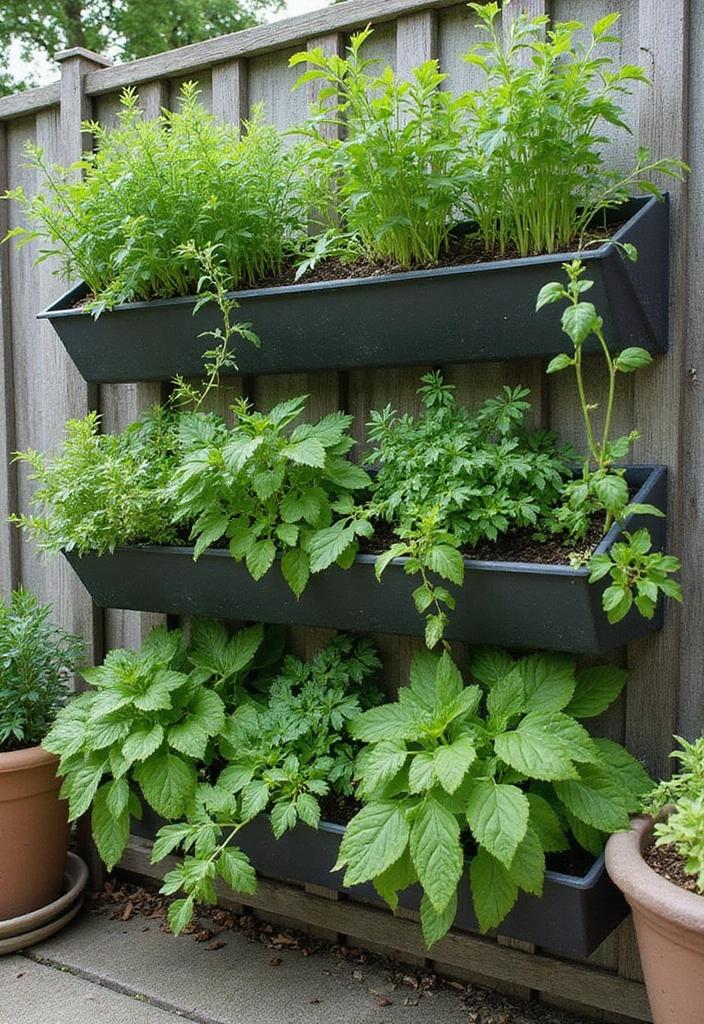
Not only do herbs offer culinary benefits, but they can also serve as fragrant privacy screens. Use vertical gardening techniques like wall planters to create a lush, aromatic barrier.
Benefits: Herbs like basil, rosemary, and mint are compact and can be harvested regularly. They attract pollinators and contribute to a healthy ecosystem in your garden.
Tips: Choose a sunny spot and aim for a variety of herbs to create a multi-sensory experience. Regular trimming keeps them bushy and fragrant.
Insights: Consider an herb wall near outdoor seating to enjoy fresh herbs right at your fingertips.
6. Colorful Foliage Plants
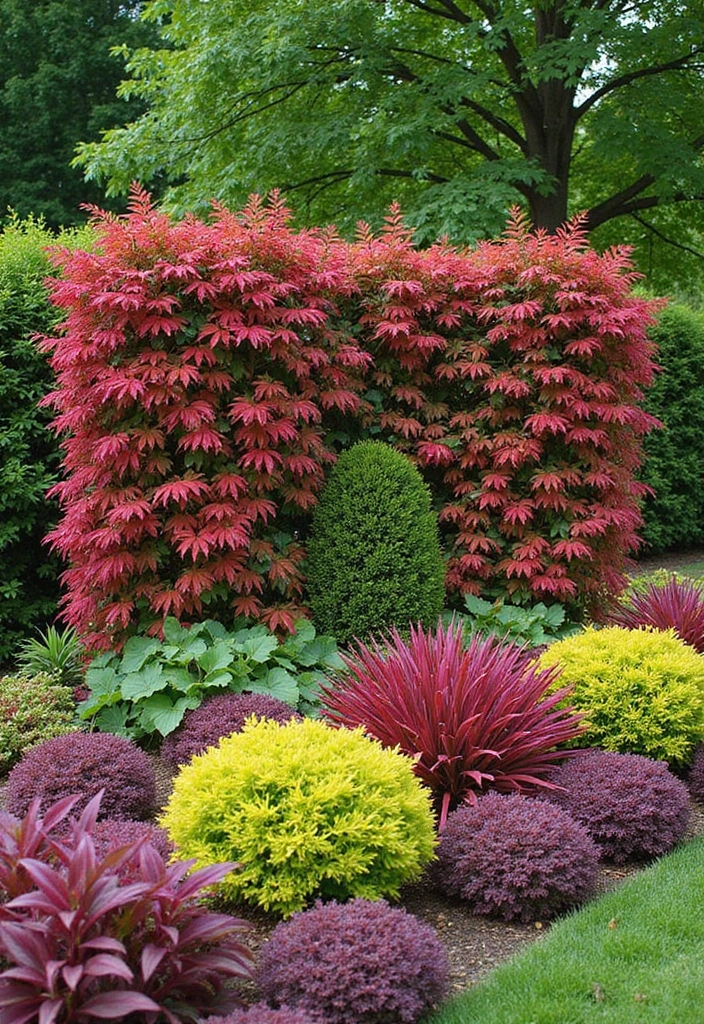
Plants like heuchera or caladium bring vibrant foliage color that can serve as a striking privacy screen. Their diverse leaf shapes and colors add an artistic touch to your garden design.
Benefits: These plants thrive in various light conditions, allowing for flexibility in placement. They’re perennial, providing year-round interest.
Tips: Mix different varieties for a multi-color effect. Consider their height and spread to ensure they provide adequate coverage.
Insights: Pair with flowering plants for a seasonal display that keeps your privacy screen dynamic.
7. Vertical Living Walls

Living walls, or green walls, are innovative solutions for privacy. By using a variety of plants, you can create a dynamic, lush space that thrives in vertical setups.
Benefits: They maximize space and provide excellent insulation and air purification. The aesthetic appeal is unmatched, turning a dull wall into a living masterpiece.
Tips: Ensure proper irrigation and drainage to support plant health. Choose plants that thrive together in similar conditions.
Insights: Consider incorporating edible plants for a functional and visually appealing screen.
8. Privacy Palms

Palms offer a tropical touch while providing ample privacy. Varieties like Areca or Fishtail palms grow tall and lush, making them ideal for screening.
Benefits: Palms are hardy in warm climates and can create a tropical paradise in your yard. They also need little maintenance once established.
Tips: Plant in groups for a more natural look. Ensure they have enough space to grow without overcrowding.
Insights: Mix with lower plants for a layered tropical effect that feels lush and inviting.
9. Succulent Screens
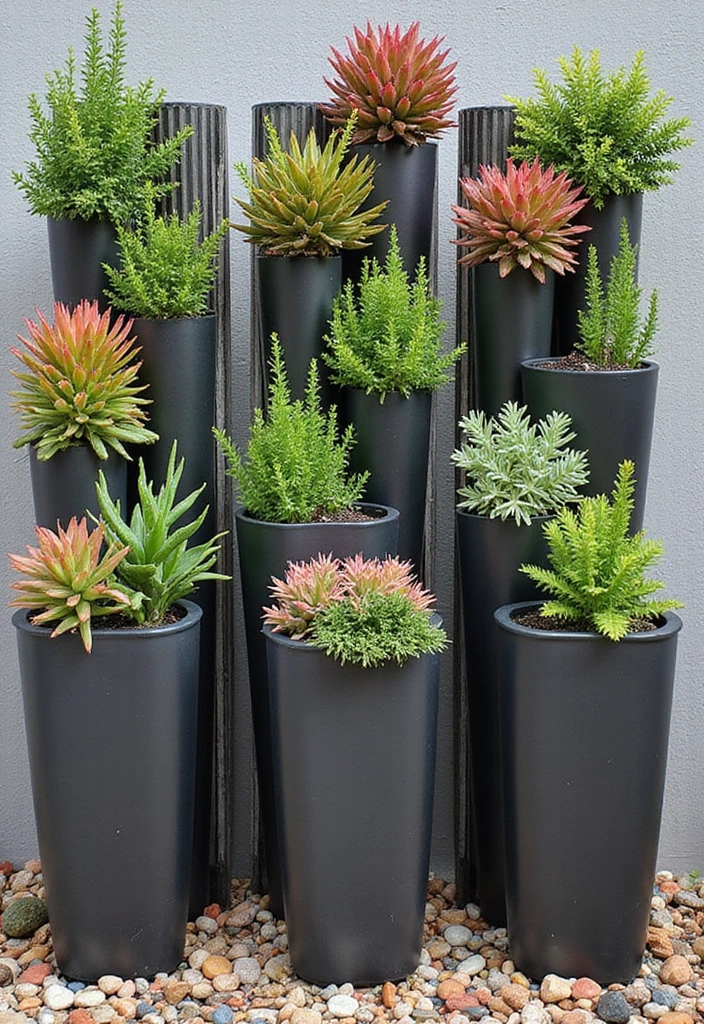
For a unique and low-maintenance option, consider creating a privacy screen with succulents. These drought-tolerant plants can be arranged in a way that offers both privacy and style.
Benefits: Succulents are very forgiving and require minimal care. Their diverse shapes and colors provide an artistic touch to any space.
Tips: Use vertical planters to maximize space and create layers. Ensure good drainage to prevent rot.
Insights: Combine with decorative stones or gravel for a modern, sleek look that complements contemporary landscaping.
10. Rustic Wooden Screens with Climbing Plants
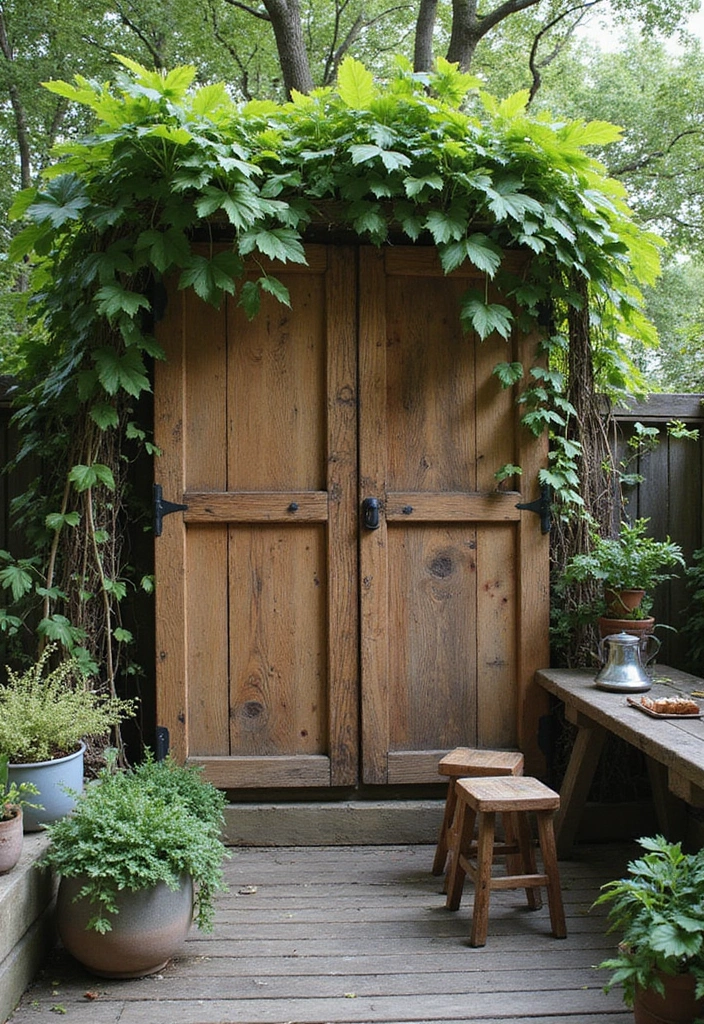
For a charming rustic look, combine wooden screens with climbing plants. The wood offers a sturdy structure while the plants add softness and vibrancy.
Benefits: Wooden screens are customizable; you can choose the size and style that fits your garden. Combining with plants enhances not only privacy but also aesthetics.
Tips: Choose durable wood treated for outdoor use to ensure longevity. Select plants that complement the rustic theme, like climbing roses or honeysuckle.
Insights: This combination can create a beautiful backdrop for outdoor gatherings, enhancing the overall atmosphere.
11. Edible Privacy Screens

Why not add some flavor to your privacy? Edible plants like berry bushes or fruit trees can create beautiful and productive screens.
Benefits: These plants not only provide privacy but also yield delicious fruits. They attract pollinators, making your garden more vibrant and alive.
Tips: Space plants adequately for optimal growth. Combine different species for a diversified screen that provides fruit throughout the seasons.
Insights: Consider companion planting to maximize yields and keep pests at bay. Plus, nothing beats the taste of freshly picked berries right from your garden.
12. Minimalist Concrete Barriers with Green Accents
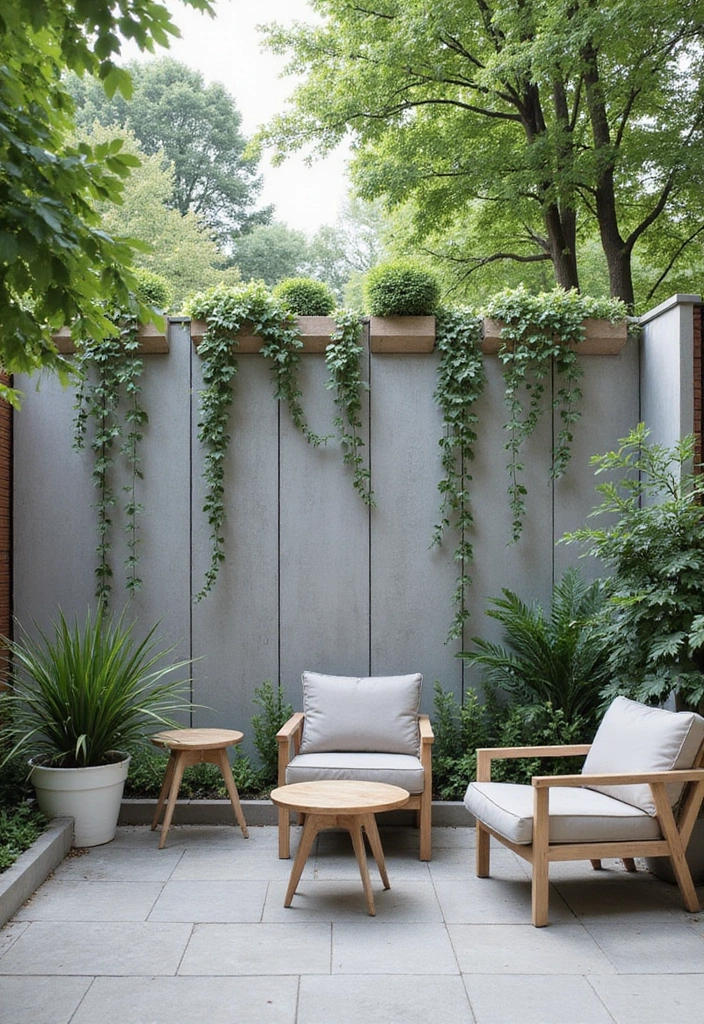
For a contemporary look, concrete barriers can serve as a strong base for low-maintenance privacy. Add potted plants or creeping foliage for a soft contrast.
Benefits: Concrete is durable and weather-resistant, creating a sturdy barrier that can withstand the elements. It provides a clean, modern aesthetic.
Tips: Use containers with trailing plants like ivy or creeping thyme to soften the edges and add texture.
Insights: This design pairs beautifully with minimalist outdoor furniture for a sleek, urban feel.
13. Seasonal Flower Screens
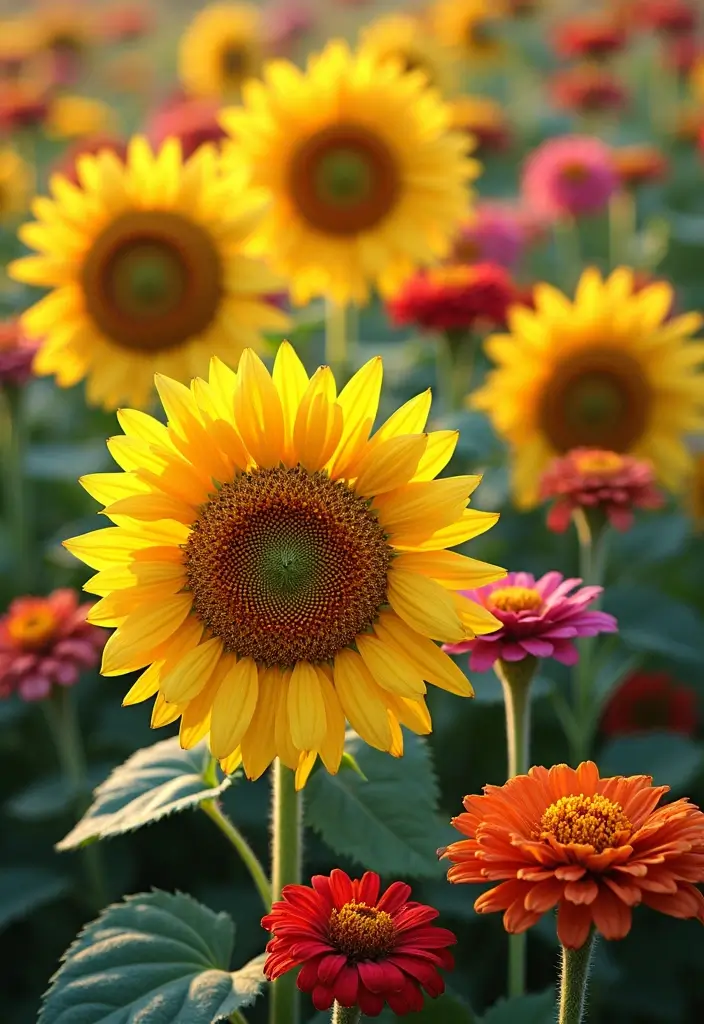
Utilize seasonal flowers to create a privacy screen that changes with the seasons. Plants like sunflowers, zinnias, or dahlias can create vibrant barriers during their bloom period.
Benefits: Flowering plants bring color and life to your garden. They attract pollinators and provide a lively backdrop.
Tips: Plan for staggered bloom times so that you have continuous color throughout the growing season. Interplant with perennials for lasting structure.
Insights: This approach allows for creative expression, as you can change flower choices annually to keep your garden fresh.
14. Stone Wall with Climbing Flora

Natural stone walls can serve as the perfect sturdy base for climbing plants, creating a beautiful and timeless privacy screen.
Benefits: Stone provides a sense of permanence and can withstand various weather conditions for years. Climbing plants like jasmine or climbing roses add charm and fragrance.
Tips: Ensure the stone wall has good drainage and consider planting at different levels for depth and interest.
Insights: This combination not only provides privacy but enhances the overall aesthetics of your garden with its rustic elegance.
A stone wall paired with climbing flora isn’t just a privacy screen; it’s a living piece of art. Create depth with varied plant heights and enjoy the charm of nature right in your backyard!
15. Tanglewood Weaving Screens
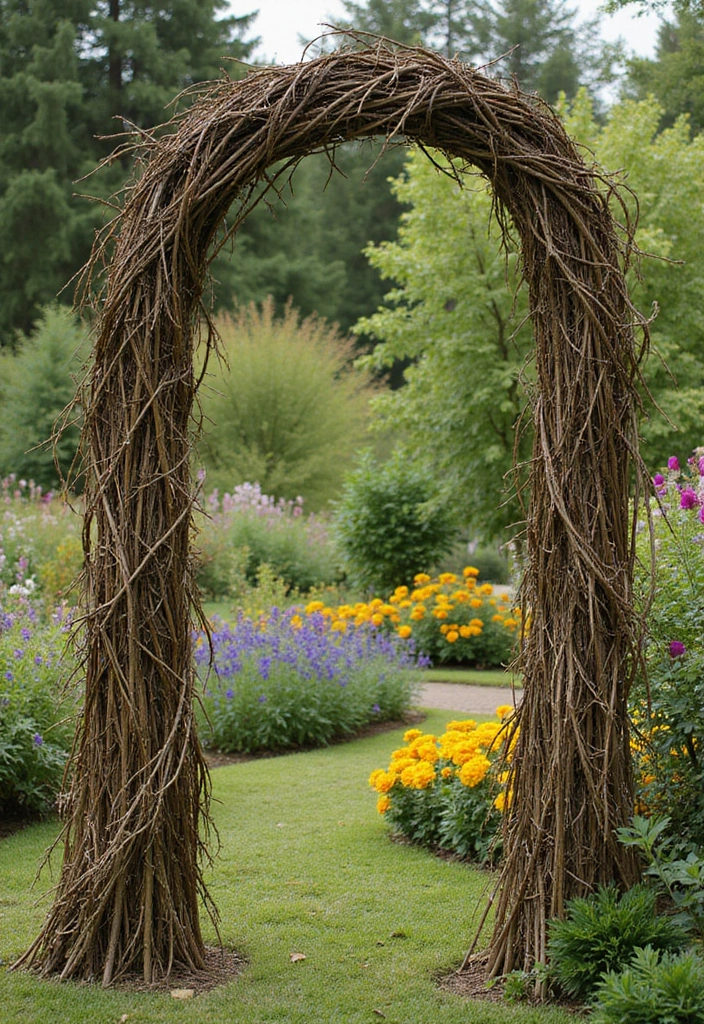
Using natural materials like willow or hazel, you can create weaving screens that offer both privacy and artistic charm. These screens bring a unique texture to your garden.
Benefits: Living fences made from willows are eco-friendly and blend beautifully into natural landscapes. They can be shaped and trained as desired.
Tips: For durability, ensure the plants are well-watered during the first growing season. Pruning helps maintain the desired shape.
Insights: Weaving different plant types can create interesting patterns and add visual interest to your garden space.
A woven plant privacy screen not only shields your space but also adds a touch of artistry. Embrace nature’s beauty and let your garden tell a story with living, breathing walls!
16. Trellis with Potted Climbing Plants
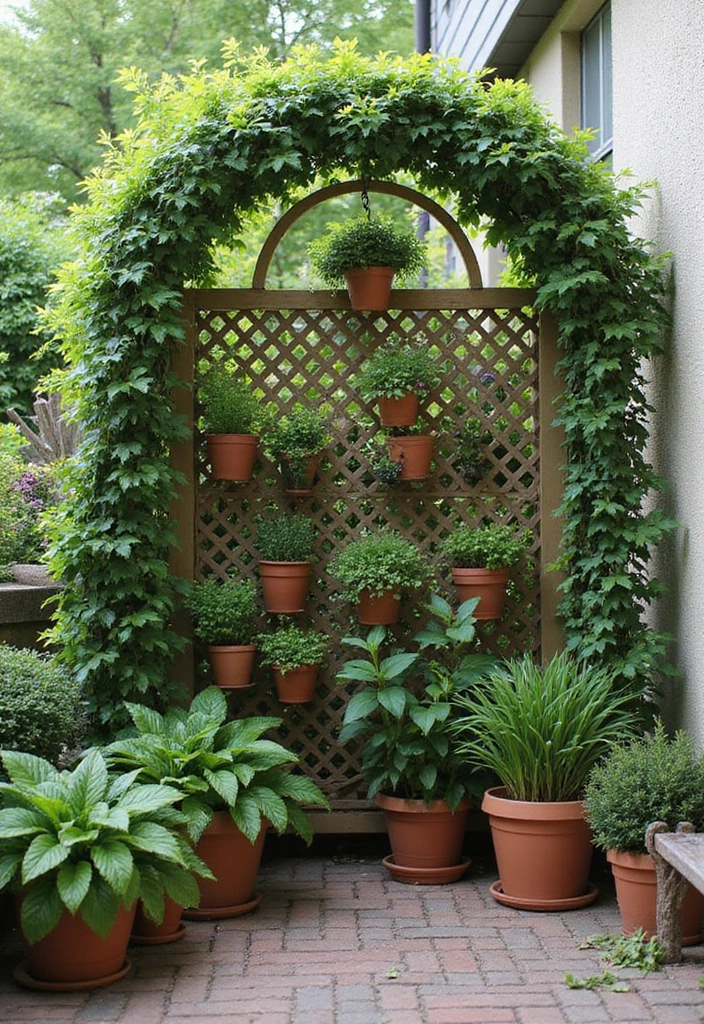
Trellises combined with potted climbing plants offer versatile options for creating privacy. This setup allows for easy rearrangement while providing lush greenery.
Benefits: Potted plants can be moved around to change the landscape, allowing for a dynamic garden design. Plus, a variety of climbing plants can be enjoyed seasonally.
Tips: Choose lightweight pots and ensure good drainage for the climbing plants. Regular maintenance like watering and pruning keeps them healthy and flourishing.
Insights: This design works well on patios or balconies, where space is limited but privacy is desired.
17. Integrated Garden Benches
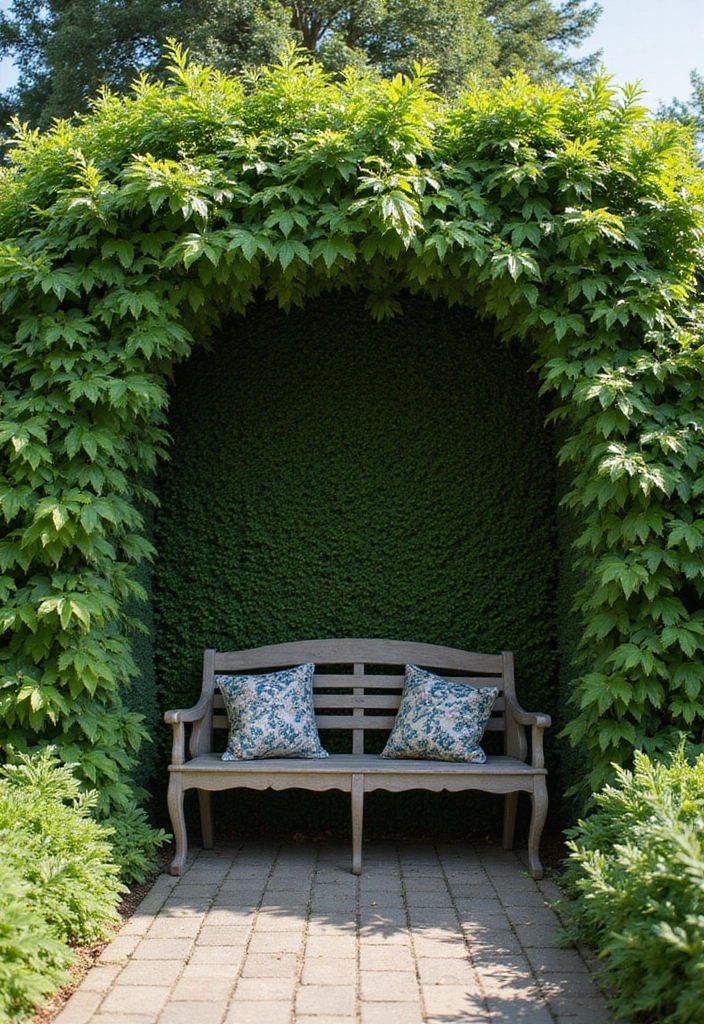
Integrating benches with plantings can create double-duty privacy screens that offer seating along with a green barrier. This setup is perfect for enjoying your garden while maintaining privacy.
Benefits: It maximizes space and provides relaxation spots in your garden. The plants serve as attractive camouflage.
Tips: Choose plants with moderate heights to ensure they don’t obstruct sightlines too much. Ensure seating is comfortable and blends with the plantings.
Insights: This setup encourages outdoor living, making your garden a true retreat.
18. Mixed-Height Plantings
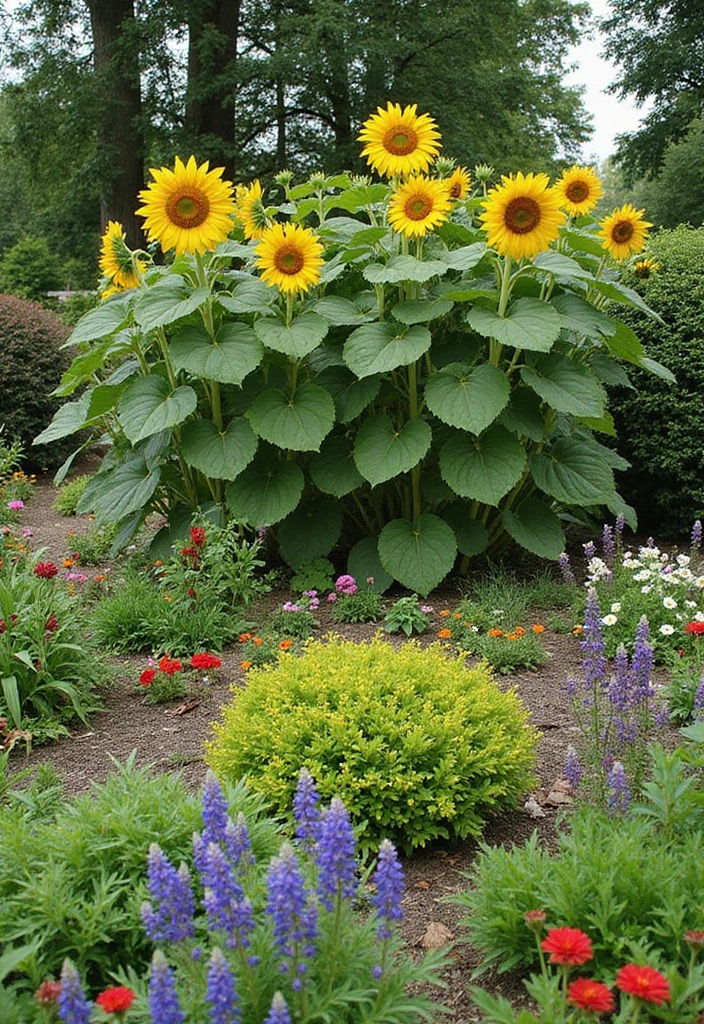
Creating a privacy screen with varying heights adds depth and interest. Layering plants like taller sunflowers with shorter perennials provides a visually appealing barrier.
Benefits: Mixing heights creates an inviting atmosphere while maximizing privacy. It’s great for creating hidden nooks in your garden.
Tips: Plan the layout in advance to ensure that each plant has enough space for growth. Use taller plants as backdrops and shorter ones as fronts.
Insights: This technique provides a natural look that feels organic and wild, perfect for cottage gardens.
A mixed-height plant privacy screen not only shields your space but also invites curiosity. Layering taller sunflowers with shorter blooms creates a stunning backdrop, turning your garden into a hidden oasis!
19. Vertical Container Gardens
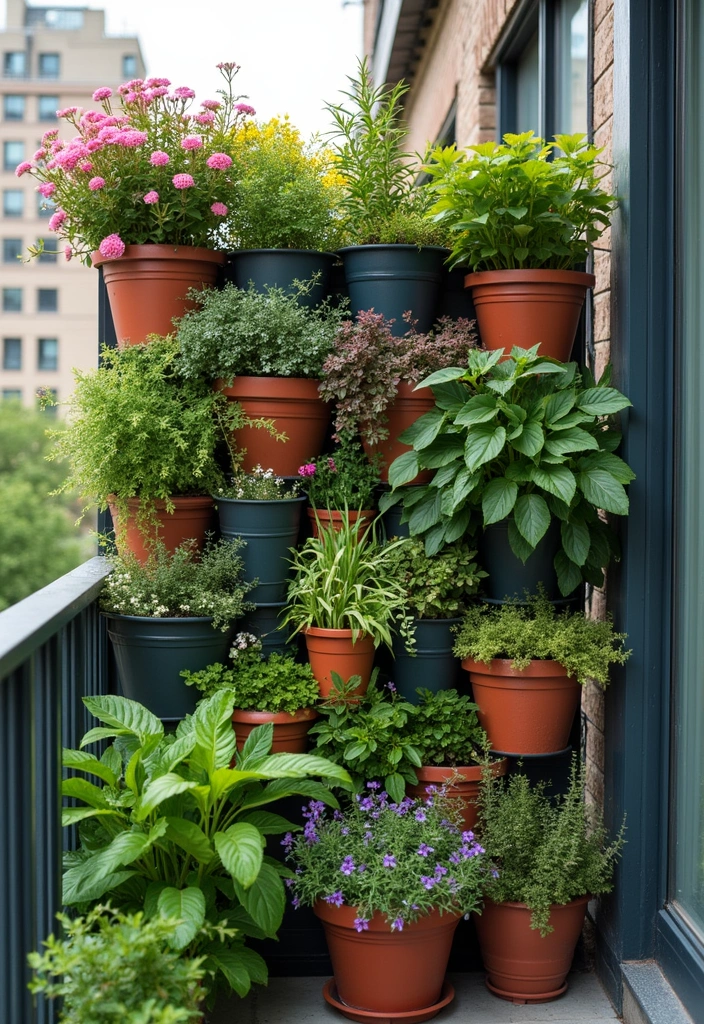
Vertical containers offer a modern solution for creating privacy screens without taking up too much ground space. They can be placed in any sunny spot and filled with a variety of plants.
Benefits: These containers allow for maximum plant variety, from flowers to herbs, all within arm’s reach. They’re perfect for urban gardens where space is limited.
Tips: Opt for good-quality, weatherproof containers to ensure durability. Proper watering and drainage are crucial for plant health.
Insights: Using a color scheme for your container plants can add an extra layer of design to your space.
20. Layered Shrub Screens
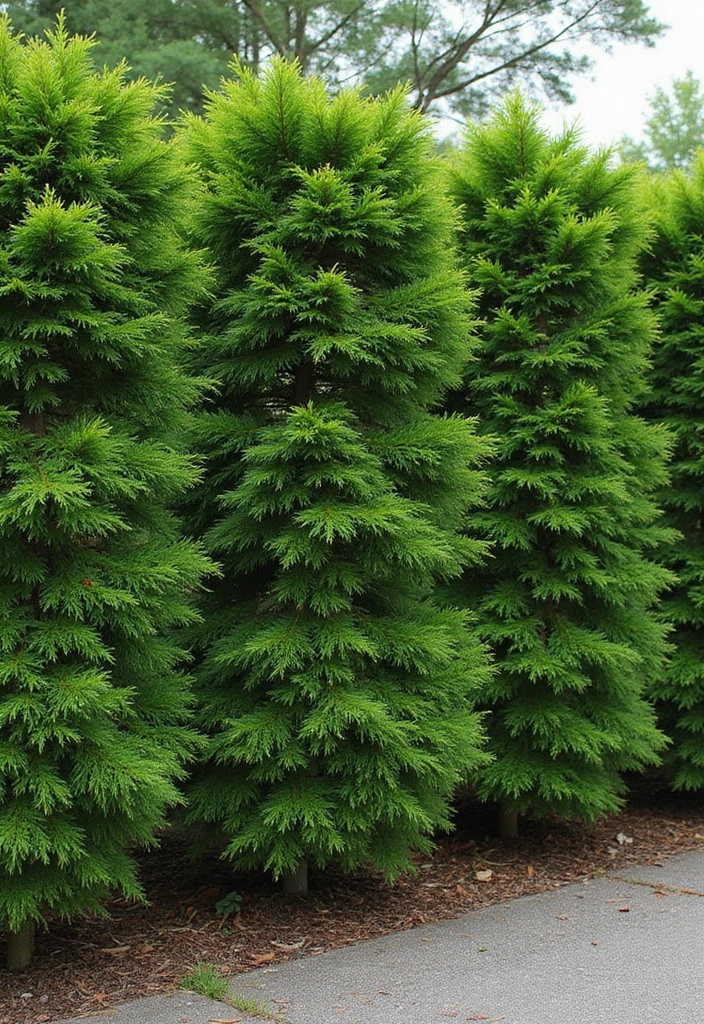
Using a combination of shrubs can create a thick, lush privacy screen that is both beautiful and functional. Varieties like holly, laurel, and viburnum provide evergreen coverage year-round.
Benefits: Shrubs provide a solid barrier against noise and unwanted views. They also come in various colors and forms, enhancing your garden’s aesthetics.
Tips: Group shrubs based on their growth patterns, placing taller ones in the back and shorter ones in the front. Regular pruning encourages fullness and health.
Insights: Incorporating seasonal flowering shrubs can add bursts of color throughout the year, keeping your screen dynamic.
21. Natural Fences from Trees
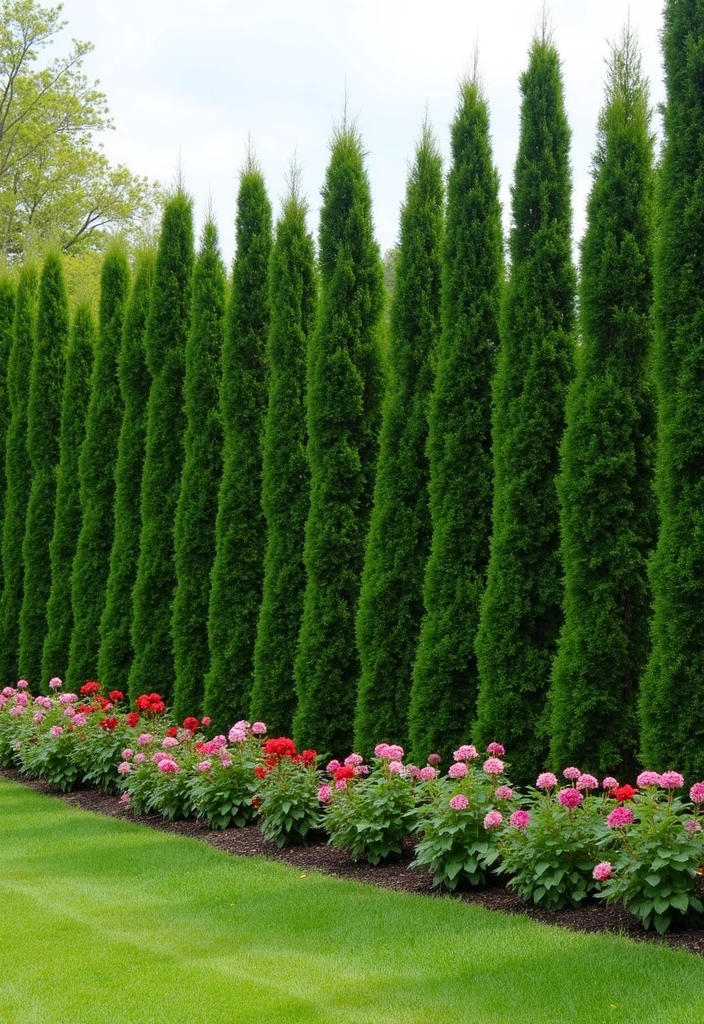
Planting fast-growing trees like willows or junipers can create a natural fence that enhances privacy beautifully. They provide shade, habitat for birds, and a natural aesthetic.
Benefits: Trees offer a long-lasting solution for privacy and can improve air quality. They also help with noise reduction, creating a peaceful garden environment.
Tips: Plan for the mature height and width of the trees to avoid overcrowding. Regular maintenance is key to managing their growth.
Insights: Mix in flowering perennials at the base for an eye-catching transition from ground to tree.
22. Vertical Pallet Gardens
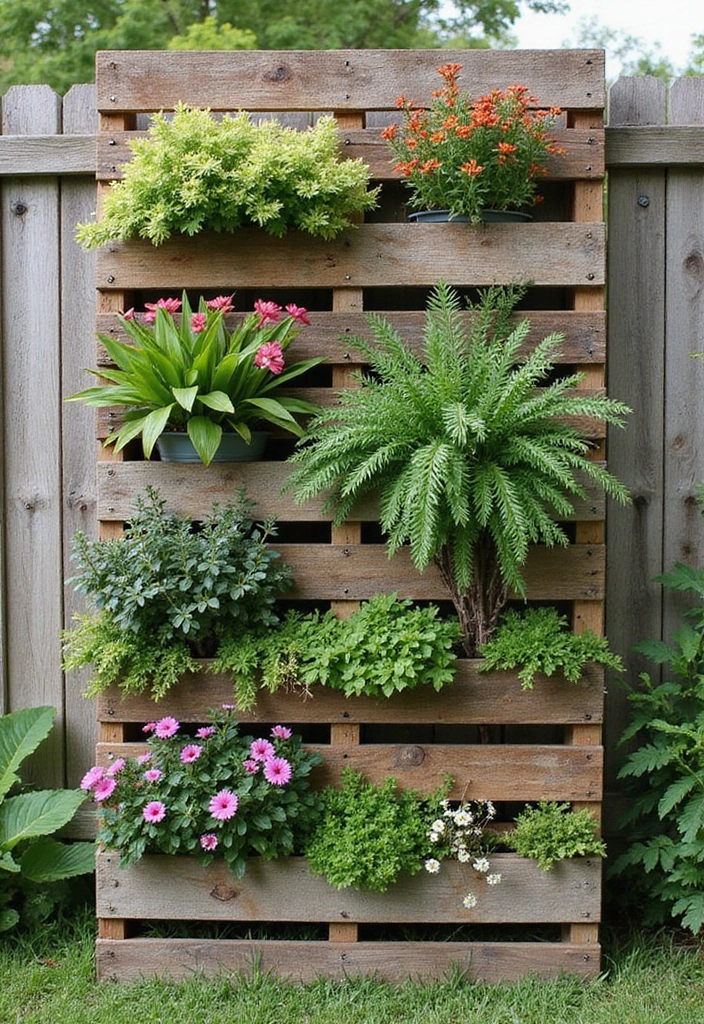
Recycled pallets can be transformed into vertical gardens that act as unique privacy screens. Filling them with vibrant plants can give your garden a creative twist.
Benefits: Pallet gardens are budget-friendly and eco-conscious, perfect for DIY enthusiasts. They utilize vertical space effectively.
Tips: Properly treat the pallet to withstand outdoor conditions. Be sure to line the back with landscape fabric to keep soil from spilling out.
Insights: Painting the pallets can add a pop of color, enhancing your garden’s overall appeal.
23. Grapevines on Arbor Structures

Grapevines can create a stunning privacy screen when grown on arbors. This not only provides a beautiful green wall but also produces delicious fruits!
Benefits: Grapevines grow quickly and provide dense coverage, plus they’re a fun way to enjoy fresh grapes right in your yard.
Tips: Choose a sturdy structure that can support the weight of the vines as they grow. Regular pruning is essential to encourage healthy growth and fruit production.
Insights: This setup creates an enjoyable shaded area to relax under while enjoying the view.
24. Soft Perennial Borders
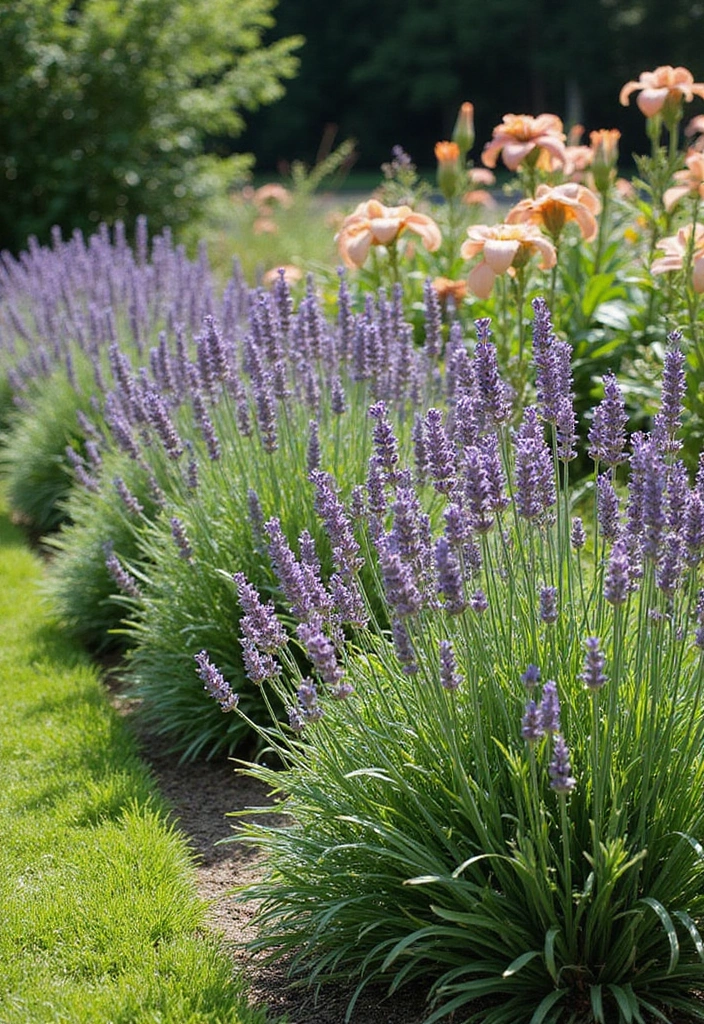
Using soft perennials like lavender or daylilies can create a subtle yet effective privacy barrier. These plants provide gentle beauty and a fragrant experience as they bloom throughout the seasons.
Benefits: Perennials are low-maintenance, return year after year, and can attract pollinators. Their soft edges create a welcoming look.
Tips: Plant in layers to ensure continuous coverage and seasonal blooms. Group same species together for a more striking effect.
Insights: Adding pathways or stepping stones can enhance the design and allow for easy access to these lovely plants.
25. Urban Green Screens
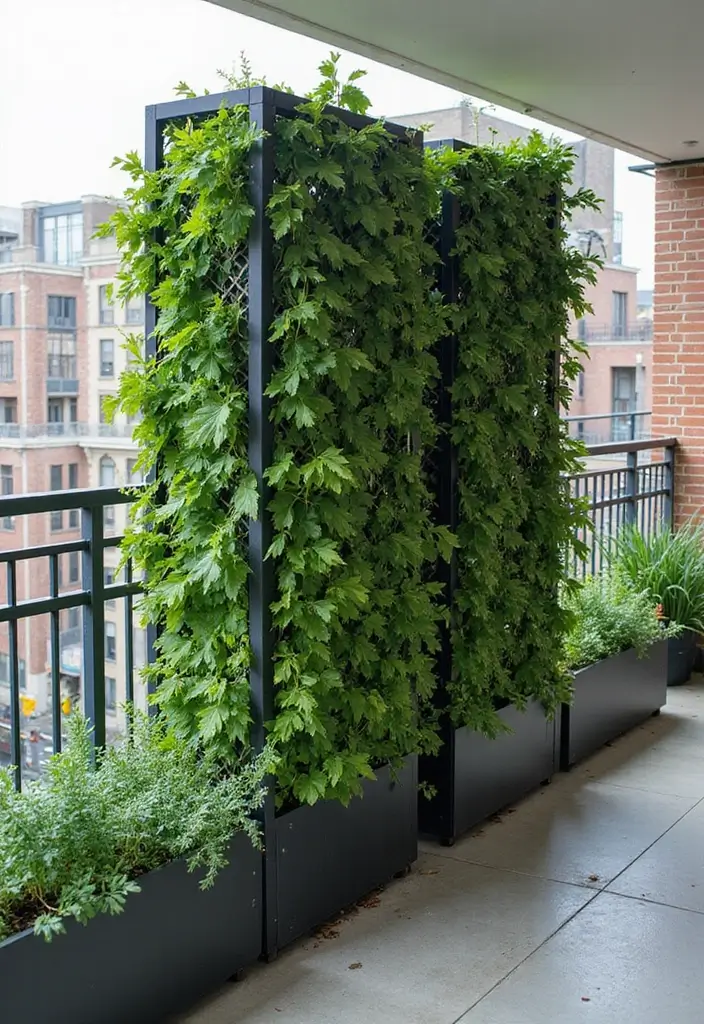
For city dwellers, urban green screens made of modular planters filled with hardy plants can create privacy in small spaces. They are ideal for balconies or patios.
Benefits: Modular systems can be rearranged and customized to fit your space. They provide greenery and help to buffer noise from the city.
Tips: Choose drought-tolerant plants that can withstand urban conditions. Incorporating edible plants not only adds privacy but also utility.
Insights: This can be a stylish way to incorporate green living into your urban lifestyle while enjoying the outdoors in privacy.
26. Decorative Fencing with Climbing Plants
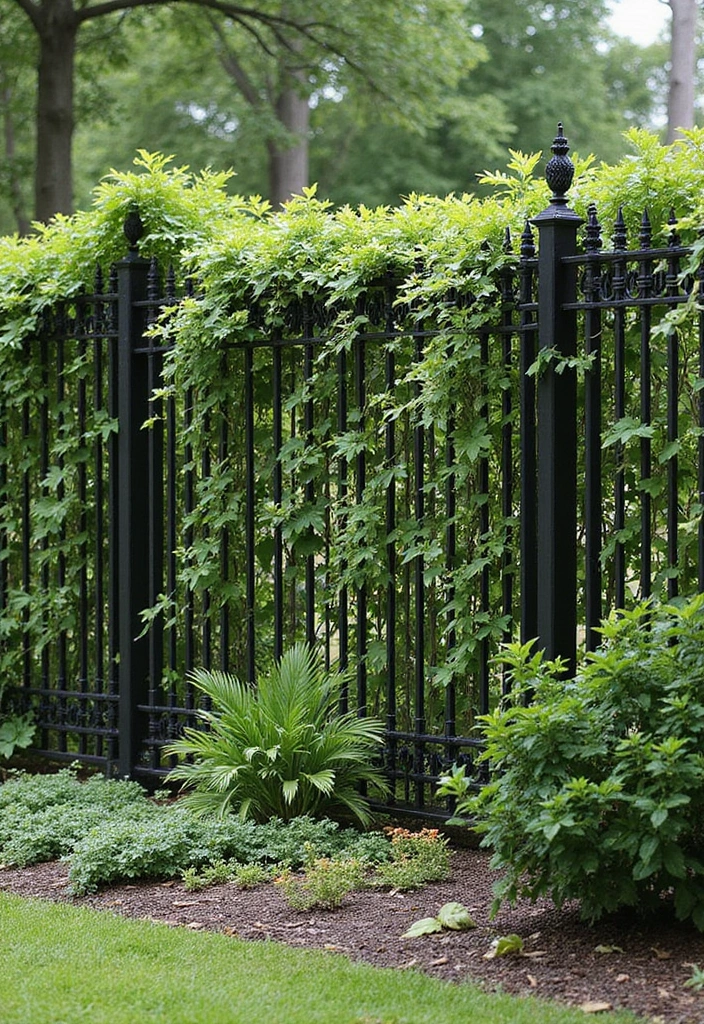
Combining decorative fencing with climbing plants creates a stunning privacy solution. This combination enhances security while offering a natural feel.
Benefits: Decorative fences come in various materials and styles, allowing for a personalized touch. Climbing plants soften the hard lines of the fence, adding natural beauty.
Tips: Opt for strong climbing plants that can thrive in your climate. Regular maintenance like trimming helps keep the plants healthy.
Insights: This design can make your outdoor space feel more welcoming, enhancing curb appeal.
27. Privacy with Native Plants
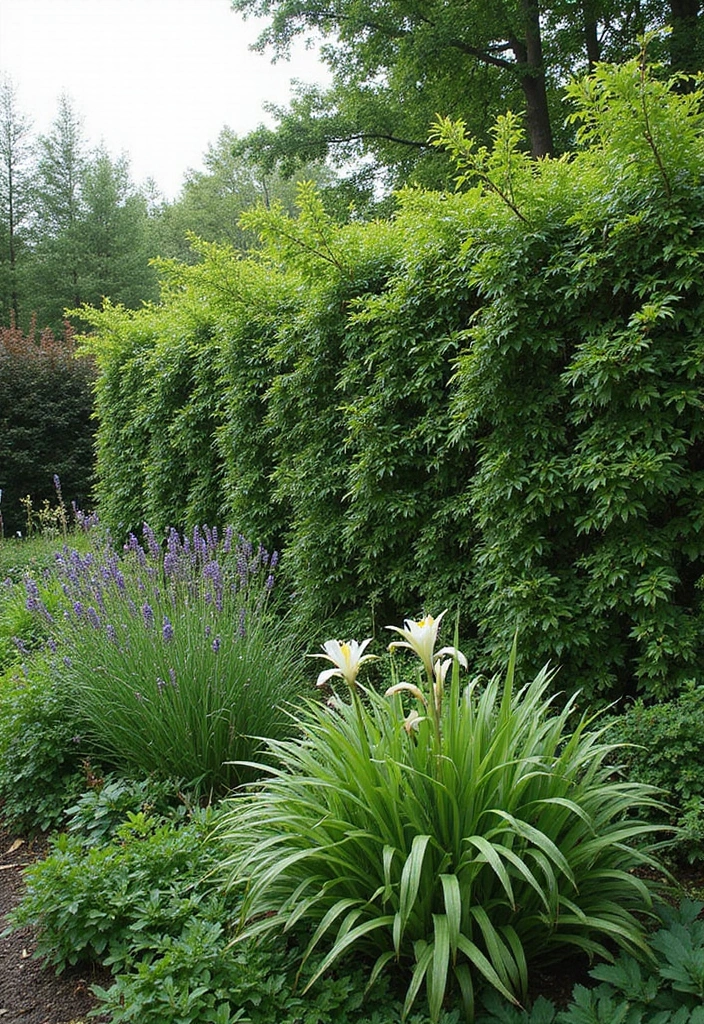
Using native plants for privacy screens is not only environmentally friendly but also supports local wildlife. Plants like elderberry or native ferns can thrive without much additional care.
Benefits: Native plants are adapted to your local climate, requiring less water and maintenance. They provide habitat for birds and other local fauna.
Tips: Research native species in your area to understand growth habits and care requirements. Grouping plants can enhance their impact and provide effective coverage.
Insights: Using native plants creates a sense of place and promotes biodiversity in your garden.
28. Artful Plant Sculptures
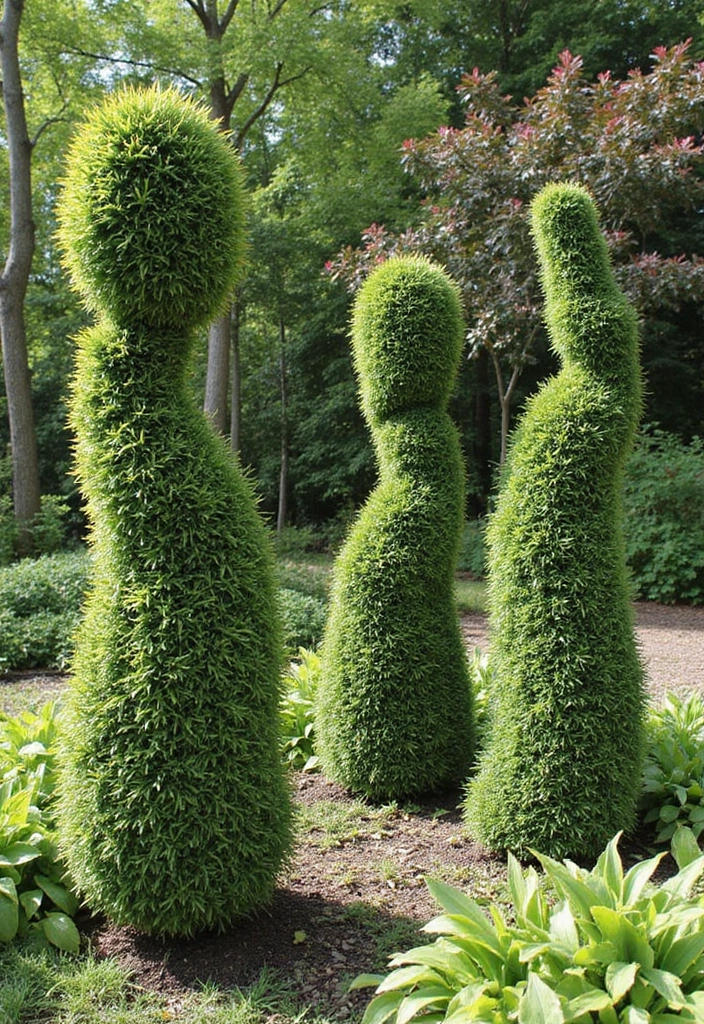
Consider using unique plant sculptures as privacy screens. Plants shaped into different forms offer an artistic and creative approach to privacy.
Benefits: These sculptures can be conversation starters and add a unique emphasis to your garden layout. They can be made from various types of plants, incorporating different textures and colors.
Tips: Research plant varieties that respond well to sculpting. Regular trimming and shaping are necessary to maintain the desired form.
Insights: This is a great way to express your creativity and personalize your garden space.
29. Living Bamboo Fences
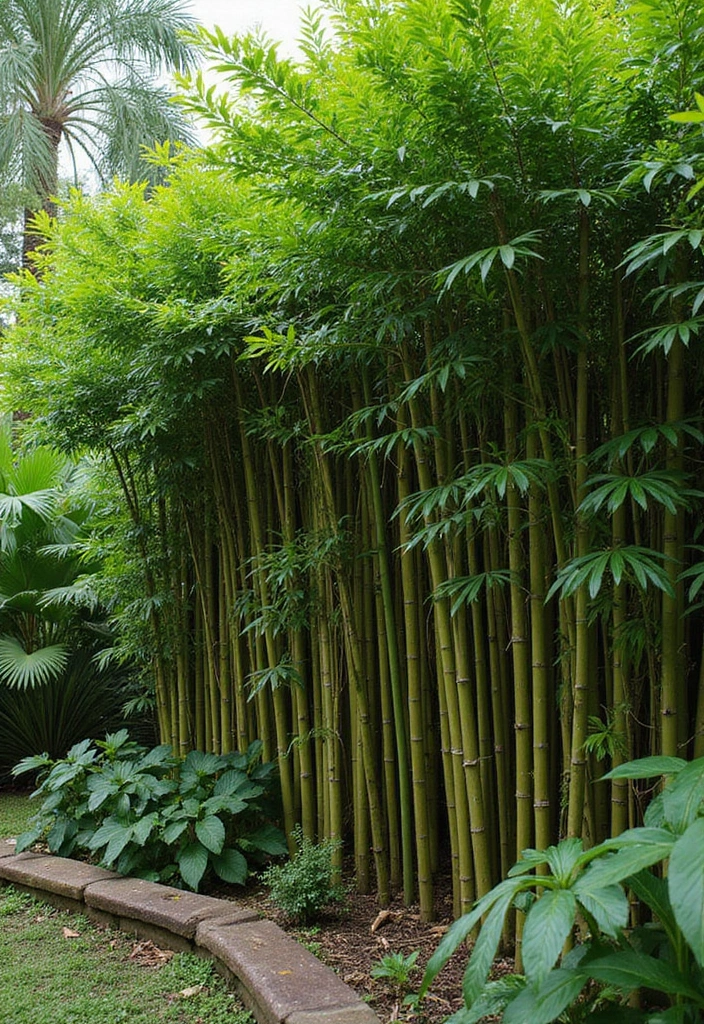
Living bamboo fences serve as both a privacy screen and a beautiful landscape feature. They grow densely and provide a tropical feel to your space.
Benefits: Bamboo is fast-growing, creating a thick barrier in a short amount of time. It also provides a habitat for local wildlife, enhancing your garden’s ecosystem.
Tips: Choose clumping varieties to avoid invasiveness. Regular watering and occasional trimming will keep the fence healthy and manageable.
Insights: A living bamboo fence can be an eye-catching feature that brings both style and functionality to your home.
30. Mixed Evergreen Privacy Screens
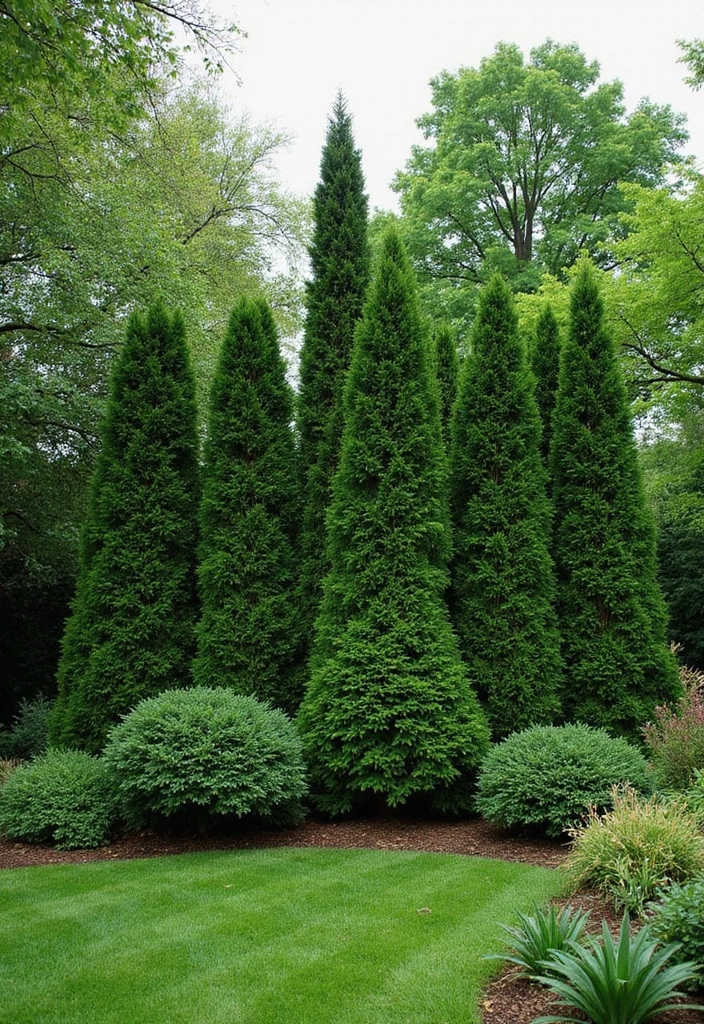
Creating a privacy screen with a mix of evergreens can provide year-round coverage and interest. Combining different heights and textures enhances the visual appeal.
Benefits: Evergreens provide constant greenery, ensuring your privacy is maintained even in winter. They are great for noise reduction and windbreaks.
Tips: Choose a variety of species for a dynamic look and plant them strategically to maintain height and density.
Insights: Mixing evergreens with flowering plants can create a garden that is stunning in every season.
Conclusion

Plant privacy screens are not just functional but can also elevate the beauty of your outdoor spaces. With these 30 creative ideas, you can craft a personal oasis that reflects your style and enhances your garden’s appeal.
Explore which options resonate with you and get started on designing the perfect natural barrier that meets your privacy needs while making a statement in your landscape.
Frequently Asked Questions
What Are the Best Plants for a Privacy Screen in My Garden?
Creating a natural barrier can be both beautiful and functional! Some of the best plants for a privacy screen include bamboo, which grows quickly and densely, and hedging plants like boxwood or privet that can be shaped into stunning topiaries. You might also consider flowering vines on trellises for added height and fragrance!
How Can I Create a Privacy Screen in a Small Outdoor Space?
No worries if you’re short on space! You can utilize vertical gardening techniques like wall planters or trellises with climbing plants. Think about using modular planters filled with hardy plants that can thrive in small areas, making your little oasis both private and vibrant!
Are There Edible Plants That Can Also Serve as Privacy Screens?
Absolutely! Using edible plants like berry bushes or fruit trees not only provides a privacy screen but also offers delicious treats right from your garden. These plants can create beautiful and productive screens, allowing you to enjoy your outdoor space even more!
What Maintenance Is Required for Plant Privacy Screens?
Maintaining your plant privacy screens can vary based on the plants you choose. Generally, you’ll want to focus on regular pruning to keep them healthy and within desired shapes. Additionally, ensure they are well-watered and check for pests occasionally. A little care goes a long way in keeping your screens lush and vibrant!
Can I Use Native Plants for Privacy Screens in My Garden?
Yes, using native plants is an excellent choice for creating privacy screens! They are typically easier to maintain and adapt well to local climates, benefiting both your garden and local wildlife. Consider incorporating plants like elderberry or native ferns for a thriving, eco-friendly screen that supports biodiversity!
